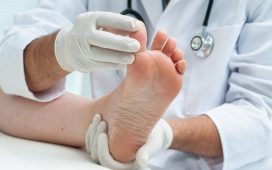Drug testing is a process that involves analysing biological specimens to detect the presence of drugs or their metabolites in your system. It is a simple process but one swab, blood vial or hair strand has the potential to expose past choices, which can affect your job opportunities, legal situations, medical diagnostics, and athletic competitions.
Drug Test Kit USA is a reliable online supplier of alcohol testing devices and drug test kits for rapid testing. The products are user-friendly, affordable and 99% accurate. Visit their website https://drugtestkitusa.com/ to learn more.
Types of Drug Tests:
Urine Drug Test (UDT):
- UDT is one of the most common and cost-effective methods for drug screening. It detects the presence of drug metabolites in your urine.
- Employment screenings, probation, and pre-employment assessments often use urine drug tests. They are non-invasive, easy to administer, and provide a broad detection window.
Hair Follicle Drug Test:
- This method involves testing a small hair sample for drug metabolites. Hair follicle tests can detect drug use over an extended period, sometimes up to 90 days.
- Hair follicle tests are often used in workplaces and legal contexts where a longer detection window is crucial. They are less susceptible to contamination but may not be suitable for detecting recent drug use.
Blood Drug Test:
- Blood tests directly measure the presence of drugs or their metabolites in your bloodstream. They are highly accurate, but have a shorter detection window.
- Blood tests are commonly used in medical settings, accident investigations, and DUI (Driving under the Influence) cases. They provide real-time information about recent drug use.
Saliva Drug Test:
- Saliva drug tests detect the presence of drugs in oral fluids. They are non-invasive and provide a shorter detection window compared to urine tests.
- Saliva tests are often used in roadside screenings, workplace testing, and pre-employment checks. They are convenient and less intrusive than blood or urine tests.
Sweat Drug Test (Patch Test):
- Sweat patch tests involve placing a patch on the skin to collect sweat, which is then analyzed for drug metabolites.
- These tests are commonly used in legal and child custody cases. They offer a continuous monitoring option over an extended period, providing a comprehensive view of drug use patterns.
So, when does the need for a drug test arise? The answer [much like the tests themselves] is multidimensional.
Employment:
Many companies, especially in the transportation or healthcare sector, mandate pre-employment drug tests to ensure the well-being of employees and the public. Random testing helps to deter drug use and maintain a safe work environment.
Legal System:
In criminal cases, drug tests are often used as evidence to support charges of possession or driving under the influence. Probation and parole programs also use drug testing to monitor compliance and progress.
Healthcare:
In addiction treatment, drug tests provide crucial information about a patient’s progress. It helps to tailor interventions and assess treatment effectiveness.
Sports:
Athletes in many professional leagues undergo regular drug testing to maintain fairness and prevent performance enhancement.
Military:
Maintaining a high level of readiness and safety is paramount in the military. Drug testing ensures that the personnel are fit for duty.
Conclusion:
Every drug test type serves a different purpose. While it serves valuable purposes in specific contexts, there are concerns about privacy, discrimination, and the potential for false positives. So, drug testing requires careful consideration and responsible application.
As technology advances, the field of drug testing continues to evolve, offering more accurate and efficient methods for detecting substance abuse.







